
Many of the successful planted aquariums in the world are very simple affairs without carbon dioxide additions and pretty much ANY combination of substrates, plants, aeration and filtration. And as long as they follow one “guideline” they can do well. This one “guideline” is:
.
Only have a Few Small Fish in the Planted Aquarium
.
Adding a sizable number of sizable fish to a planted aquarium is possible, but challenging.
There are several general methods used by hobbyists to give beautiful planted tanks free of algae. We will look at those methods in this article.

Specialized Planted Aquariums
There are several basic types of specialized planted aquariums as to the technology used. Each of the several types has an infinite number of possibilities, all of which can be made to work well.
“Natural” planted tanks are low tech affairs with little in the way of fertilization and no CO2 injection. The following chart summarizes those several types of planted aquariums for what are called “natural” Planted Tanks:
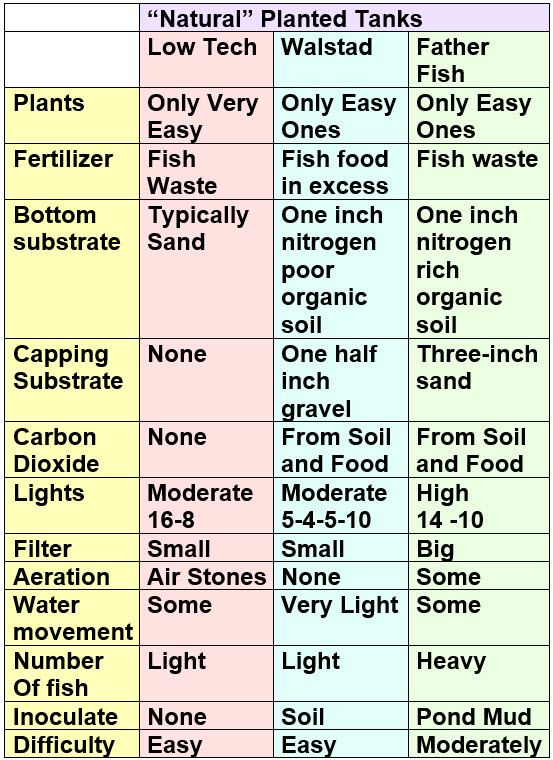
These are only guidelines frequently ignored. For instance I have seen some difficult plants both in Walstad and in Father Fish type tanks. It is just not the “norm”.
Then there are the various “High Tech” or “Chemical” methods for running a planted aquarium. These use fertilization and typically some sort of CO2 generation, The three general methods are:
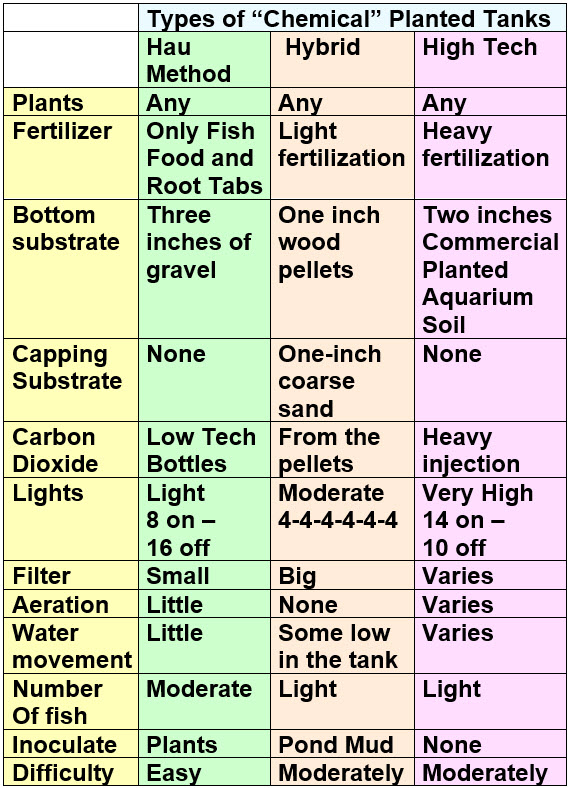
We go into each of these several types of specialized planted aquariums in these links:
15.8. Walstad Aquarium
15.9. High-Tech Planted Aquarium
15.10. Hybrid Planted Aquariums
15.11. Many Fish Many Plants
15.13. Hau Aquariums
15.14. Low Tech Planted Aquariums
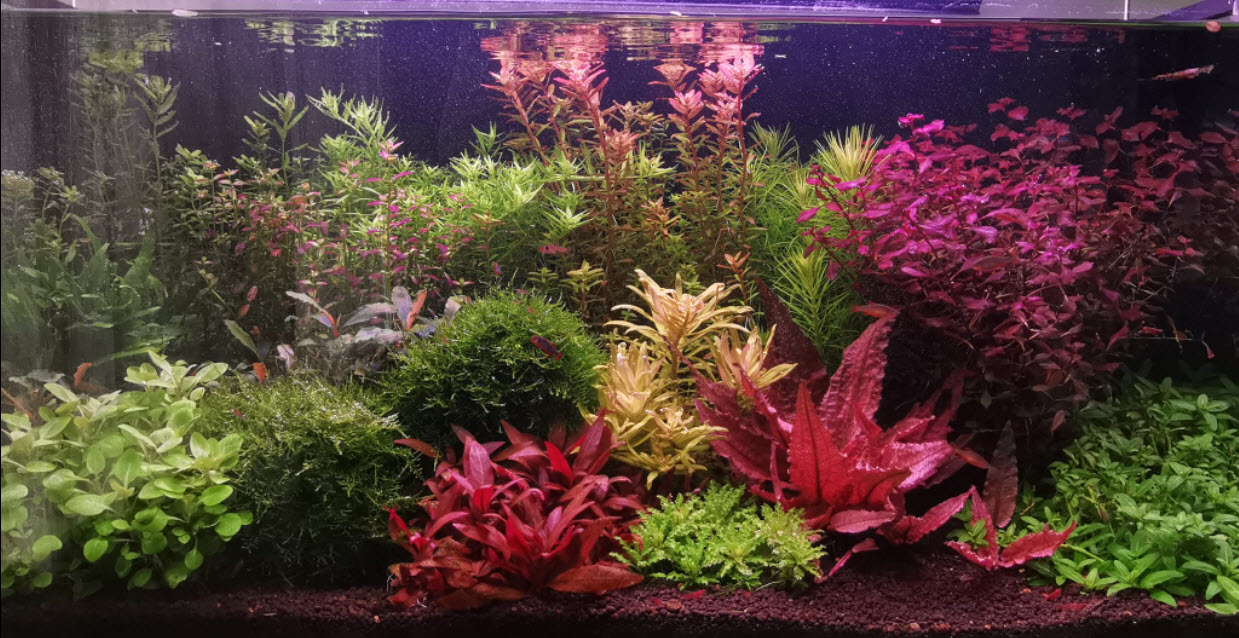
Trimming Plants
There are two basic types of planted aquariums: the wild, untrimmed look and the formal trimmed look. There is a very good analogy that can be used here. With terrestrial front yards that are planted there are two types seen: the informal bushy look and the formal very trimmed look with hedges and poodle plants. Aquarium plants are much like terrestrial plants in that they will stretch out and get leggy if allowed. Trim them and aquatic plants become thick and bushy, just like terrestrial landscaping plants.
So there develops two distinct classes of planted aquariums: the wild untrimmed look and the bushy “formal” look. Which you have just depends on your aesthetic sense.
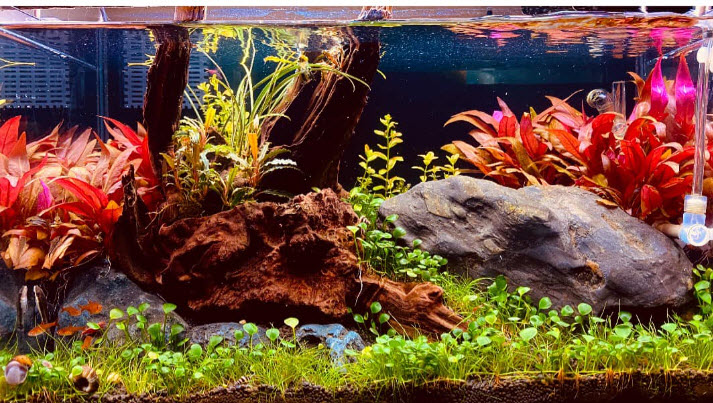
Aquascaping the Planted Aquarium
Another aspect of the planted aquarium is something called “aquascaping”. This is an art form much like gardening. There are all sorts of styles and preferences. There are even competitions at various aquarium shows as to who can do the best aquascape of a new tank. A typical “mixed style”, high tech, untrimmed, planted aquarium aquascape looks like this:
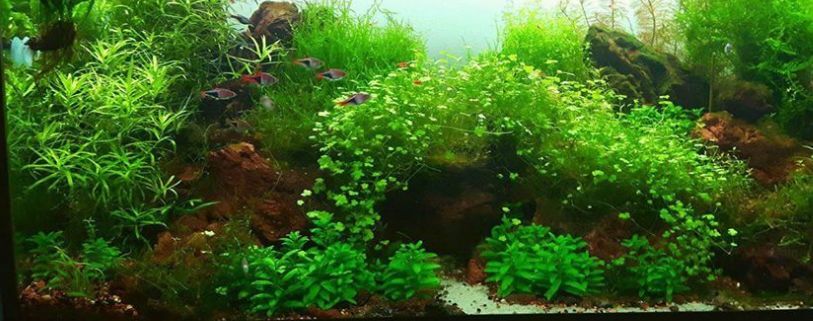
Note the small school of harlequin rasboras which are the only fish in the aquarium.
“Dutch” Planted Aquariums
Then there is a school of aquascaping called the “Dutch” method. Linear rows of plants running left to right are referred to as “Dutch streets.” This style was
developed and started in Netherlands in the 1930s.
The Dutch aquarium follows an orderly, often symmetrical arrangement, in which multiple types of plants having diverse leaf color, sizes and textures are displayed in much the same way as terrestrial plants are shown in a flower garden. It displays plants located on terraces of different heights, but these displays often omit rocks and driftwood. There is even a society which crafts standards for these aquariums.

.
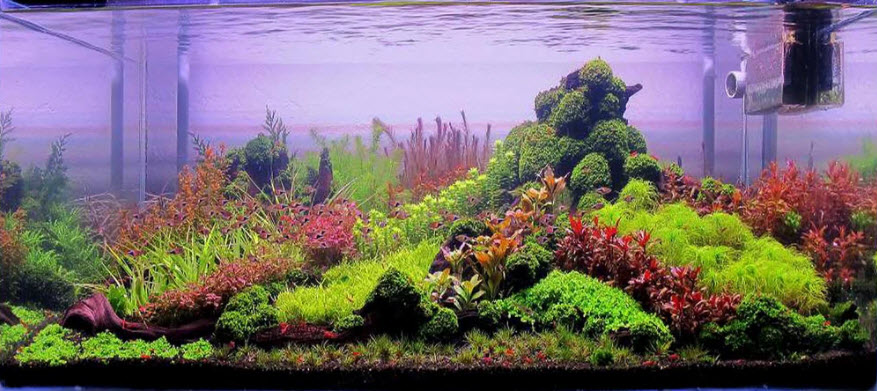
“Japanese” Planted Aquarium Styles
The Japanese make their planted aquariums much like their terrestrial “Japanese” gardens, They emphasize artistic form and rocks over plants. Often they use only one type of plant. Many aspects of religion, namely Zen Buddhism are incorporated into fresh water plant arrangement and placement. For instance, large stones that are used in the aquarium should always be in odd numbers, i.e. 1, 3, 5 and so on. Zen itself draws a lot from nature, so it is no surprise that Zen has an influence on aquascaping.
There are several Japanese aquascaping artists who set up beautiful planted aquariums
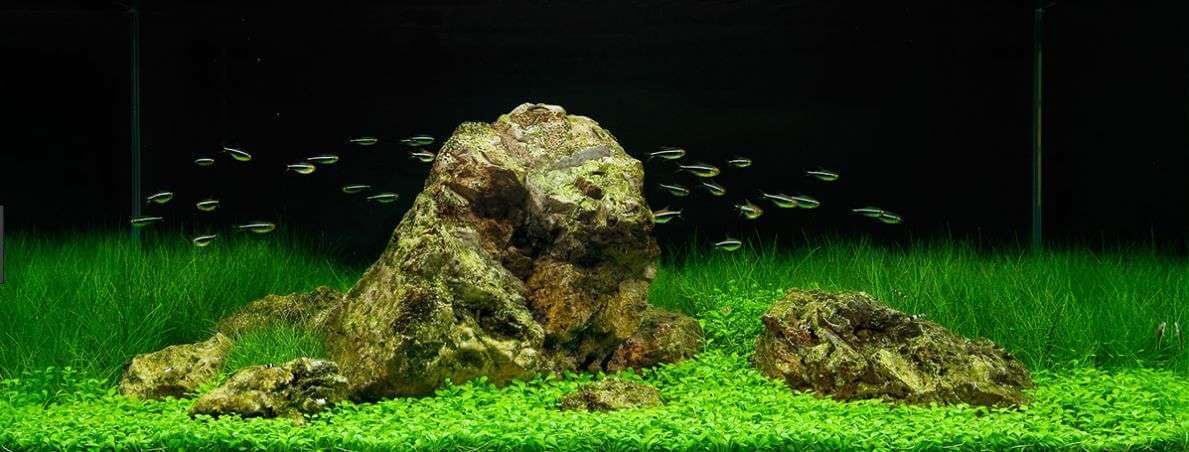
.
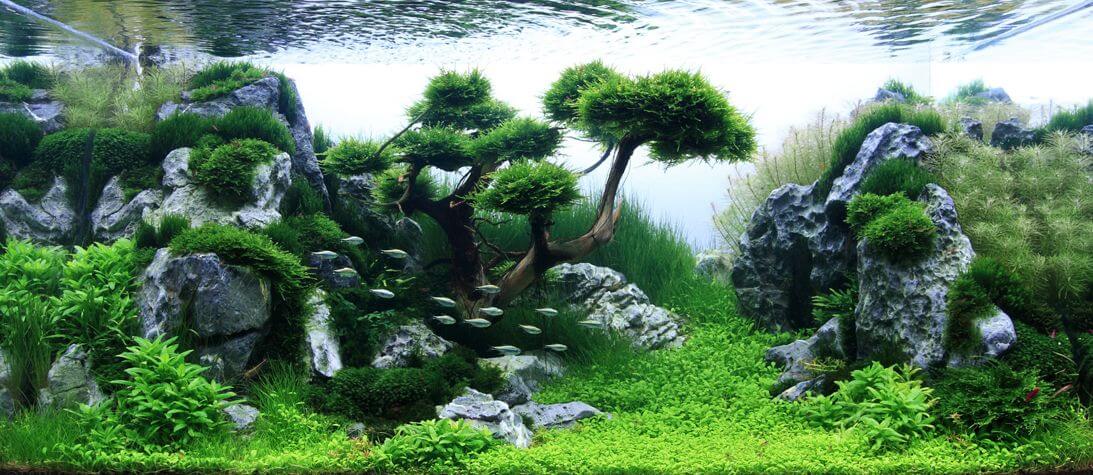
Freestyle Aquascaping
Personally I like a more free style aquascaping. Not completely natural but also not closely manicured. Rachel O’Leary (great YouTube channel) visited Melo Salazar’s 500-gallon aquarium in Mexico. This aquarium is a stunning example of this approach. Rachel has a five-minute video on the aquarium and I’ve watched it five times, drooling more with every view. Rachel is a superb videographer.

Again, Mr. Salazar probably had 300 very small fish in this large aquarium, which is very light stocking.
The “Natural” Look
Then finally these is the good old natural look. The objective is to duplicate Mother Nature rather than make a garden. This often uses Diana Walstad’s or Father Fish’s soiled tank method.

Everyone will have a different opinion of each of the these depending on everybody’s aesthetic values.
Here are some examples of planted aquariums. The file may take a while to load:
15.4.1. Planted Aquarium Examples

Planted Aquariums in Depth
The following sections will tell you some general guidelines (frequently successfully breached) on how to make a planted aquarium:
15. Planted Aquariums
15.1. Planted Aquariums in Depth
15.2. Fish for Planted Tank
15.3. Fish Limitations
15.5. Fertilizing
15.6. Carbon Dioxide
15.7. Substrates for Planted Aquariums
15.8. Walstad Aquarium
15.9. High-Tech Planted Aquarium
15.10. Hybrid Planted Aquariums
15.11. Many Fish Many Plants
15.13. Hau Aquariums
15.14. Low Tech Planted Aquariums
.
Return to Planted Aquarium Index Page
.
Aquarium Science Website
The chapters shown below or on the right side in maroon lead to close to 400 articles on all aspects of keeping a freshwater aquarium. These articles have NO links to profit making sites and are thus unbiased in their recommendations, unlike all the for-profit sites you will find with Google. Bookmark and browse!
.

Dave says
In reply to Catherine …. I’ve had several “aquariums with plants” that had undergravel filters. They were fish aquariums with a few big plants as decorations. I planted the plants in pots with soil underlayment. And the plants were all pretty easy (Val, Java Fern, Amazon swords, anubias). While root tabs are not useful in an undergravel they work just fine with pots. And the aeration is probably why I only did very easy plants. As an alternative to pots just consider the whole undergravel to be a site for easy epiphytic plants (no root tabs).
Catherine Nolan says
I’m sorry if this is elsewhere on the site, but I’m trying to plant a low-tech tank with an undergravel filter and I’m curious about best practices. I know you have a lot of experience with undergravel filters and that you have planted at least some tanks – do you have articles on this topic? It seems closest to the Hau method, but I doubt root tabs will be effective with an undergravel filter, and this filter might produce too much motion of the surface of the water. If you could point me in the right direction, I’d appreciate it!